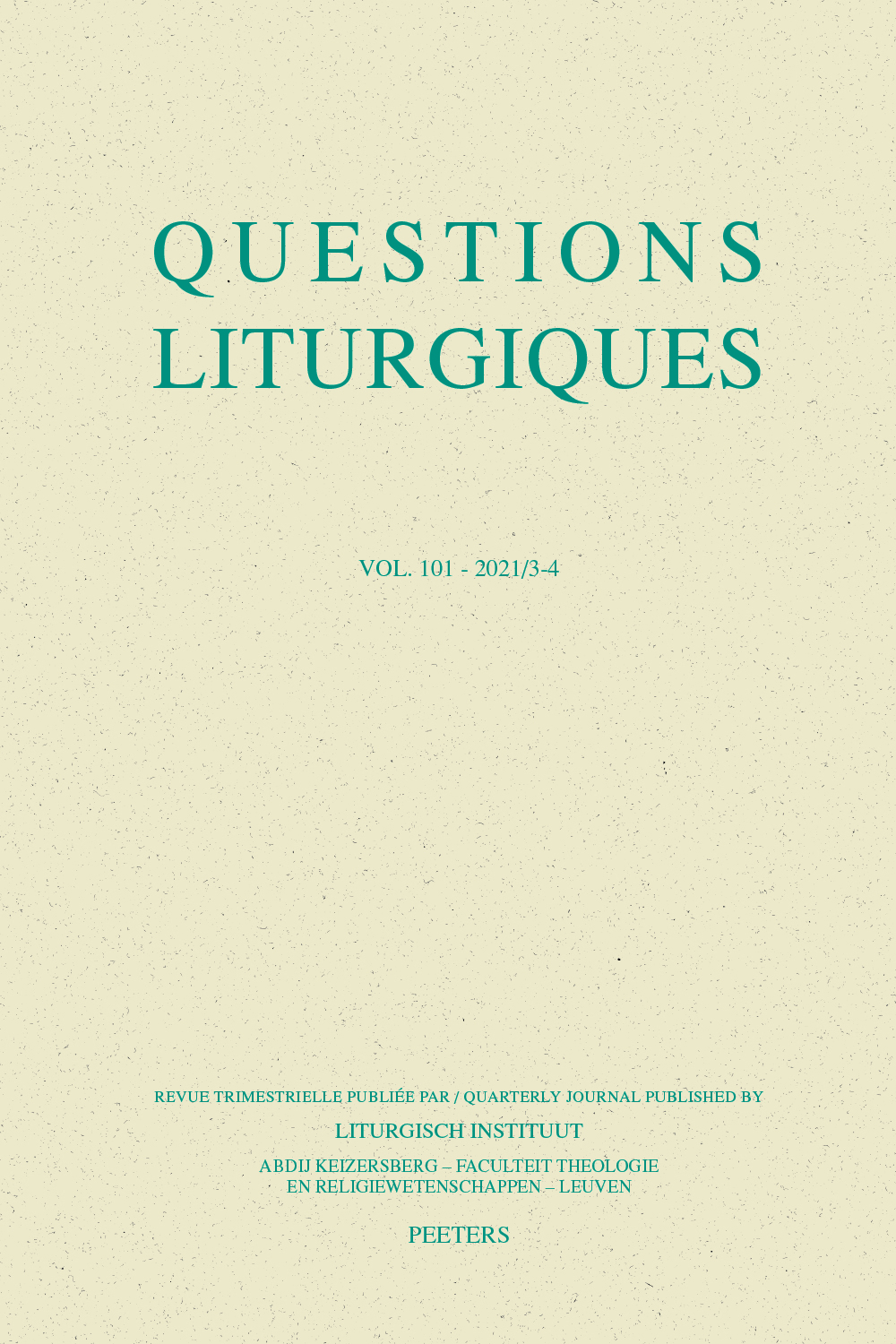 previous article in this issue previous article in this issue | next article in this issue  |

Preview first page |
Document Details : Title: Some Considerations Regarding a Paschal Liturgical Custom in the Romanian Orthodox Church Author(s): QARAMAH, Mihail Khalid Journal: Questions Liturgiques/Studies in Liturgy Volume: 104 Issue: 3-4 Date: 2024 Pages: 175-194 DOI: 10.2143/QL.104.3.3294129 Abstract : This paper seeks to find the origin of a Paschal liturgical custom particular to the Romanian Orthodox Church. In parishes (but also some monasteries) in Transylvania and Muntenia (also in a few in Moldavia), during the Eucharistic Liturgy of the Sunday of Pascha, the priest blesses pieces of bread sprinkled with wine, which are then distributed to the faithful. This bread, which is traditionally called 'pascha', is the object of a special popular devotion and is sometimes perceived as a Eucharistic substitute. In this paper the author examines four theories regarding the origin of this custom: (a) it is a form of the Calvinist Eucharist, introduced in Transylvania in the first half of the 17th century; (b) it is a local adaptation of the Paschal Artos; (c) it is derived from the bread and wine distributed according to monastic custom at the end of the Eucharistic celebration of Holy Saturday; (d) it is a form of antidoron or a collation for the rinsing of the mouth after receiving Holy Communion. Although this matter cannot be definitely resolved, because of the scarcity of conclusive historical evidence, the author finds the derivation of the 'pascha' from the monastic artoklasia of Great Saturday, as prescribed by the Typikon of St. Sabba, to be the most plausible hypothesis. Cet article cherche à trouver l’origine d’une coutume liturgique pascale propre à l’Église orthodoxe roumaine. Dans les paroisses (mais aussi dans certains monastères) de Transylvanie et de Munténie (ainsi que dans quelques-unes de Moldavie), au cours de la liturgie eucharistique du dimanche de Pâques, le prêtre bénit des morceaux de pain arrosés de vin, qui sont ensuite distribués aux fidèles. Ce pain, appelé traditionnellement «pascha», fait l’objet d’une dévotion populaire particulière et est parfois perçu comme un substitut eucharistique. Dans cet article, l’auteur examine quatre théories concernant l’origine de cette coutume: (a) il s’agit d’une forme de l’eucharistie calviniste, introduite en Transylvanie dans la première moitié du XVIIe siècle; (b) il s’agit d’une adaptation locale de l’Artos de Pâques; (c) il s’agit d’un dérivé du pain et du vin distribués selon la coutume monastique à la fin de la célébration eucharistique du Samedi Saint; (d) il s’agit d’une forme d’antidoron ou d’une collation pour le rinçage de la bouche après la réception de la Sainte Communion. Bien que cette question ne puisse être définitivement résolue, en raison de la rareté des preuves historiques concluantes, l’auteur estime que la dérivation de la «pascha» de l’artoklasia monastique du Grand Samedi, telle que prescrite par le Typikon de Saint Sabba, est l’hypothèse la plus plausible. |
|


